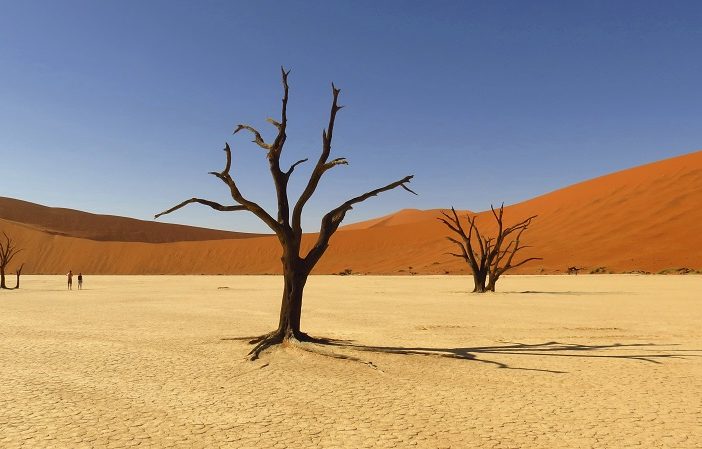 FAIR is exhibiting at the Earth Day Texas event in Dallas from Friday, April 22 through Sunday, April 24. Our booth features an interactive quiz regarding the impact of population growth and pollution in Texas.
FAIR is exhibiting at the Earth Day Texas event in Dallas from Friday, April 22 through Sunday, April 24. Our booth features an interactive quiz regarding the impact of population growth and pollution in Texas.
Earth Day offers an excellent opportunity to recognize that unbridled immigration, a driving factor in the country’s population explosion, also fosters negative environmental consequences.
Overall, the Census Bureau counted 323 million people residing in the United States, the third largest in the world. That is a gain of more than 60 percent from 1970, when the population reached around 203 million. The Census Bureau projects that the number will swell to 440 million by 2050, the vast majority of it fueled by immigration.
Texas serves as a microcosm of the relationship between immigration and environmental degradation. Migration to Texas from foreign countries and other states is booming. The state demographer predicts that the current population of 27.7 million will almost double to 54.4 million by 2050. The number of new immigrants grew 1,300 percent since 1970 to almost 4.3 million, and FAIR estimates that 1.81 million illegal aliens currently reside in the state.
With total immigration accounting for as much as 70 percent of future population growth, it is the responsibility of lawmakers to stem the tide of unfettered foreign immigration in order to preserve resources and prevent an ecological crisis.
These new residents use a lot of energy. The state produced approximately 650 million metric tons of carbon dioxide in 2013, almost doubling California, the next highest producer of carbon emissions. These totals also outrank all of Mexico and Canada. The average Texan family uses approximately 77 British Thermal Units (BTU) of energy annually, costing them $1,800. Based on the current average BTU to CO2 ratio, they emit an estimated 13,800 pounds of carbon annually.
It is no surprise that five of the top 10 – and 23 of the top 100 – fastest growing cities in the United States are in The Lone Star State. The booming gas and oil town of Odessa, located in the vast desert sands of west Texas, grew 14.7 percent between April, 2010 and July, 2015. Meanwhile, the sprawling Dallas-Fort Worth metroplex expanded 9.5 percent in the same time period. The state loses twenty acres of open space per hour for strip malls, housing and other development, increasing suburban sprawl and generating demands for government services.
Transportation by car is a necessity for many residents. The average automobile commuter in Houston, Dallas and San Antonio spends between 52 and 61 hours annually in traffic. Overall, nearly 50 percent of the state’s major urban highways are considered to be congestion prone, which vastly increases the amount of total CO2 emissions from automobiles.
Providing water for the state’s growing population and keeping waterways clean is another significant challenge. Texas groundwater supplies are expected to fall 30 percent by 2060, and solutions could cost taxpayers $53 billion. The vast Ogallala Aquifer, which supplies much of dry west Texas with irrigation and drinking water, has shrunk by as much as 100 cubic miles since 1972. If depleted, it would take over 6,000 years for the underground reservoir to refill.
Though Indiana takes the top spot for its level of water pollution, Texas is a close second and it. it occupies the top spot for the toxicity level of its water-borne waste. The Lower Brazos River, the most befouled waterway in the country, receives almost ten times the toxic discharge as the next three polluted rivers combined, and more toxic waste is dumped into the Texas Gulf than the next 19 most polluted waterways combined.
For those who claim to be concerned about the environment in Texas and across the nation, there are other huge issues to deal with beyond calling for an end to fossil fuels. It is such an elemental equation that more population increases the human impact on the environment that the founder of Earth Day, Wisconsin Senator Gaylord Nelson, understood the dangers of overpopulation when he cautioned that “the bigger the population gets, the more serious the [environmental]problems become.”
With immigration causing most of the recent and projected population growth in the United states, The Federal government and state legislators must base their immigration policies on the resources that the nation will realistically have available in the future and attempt to mitigate the environmental damage that results in part from wide open legal and illegal immigration.





2 Comments
Establishment Earthday Has Favored Somewhat Useless Recycling Over Population Control
c’mon man!
Senator Gaylord Nelson said this about linking immigration and environmental degradation: “People have been silenced because they are scared to death of being charged with being racist.”
The Sierra Club took the EXACT same positions decades ago as FAIR and other immigration restriction groups. Now they charge such positions are racist and bigoted. The fact is that they sold out to a very wealthy contributor, David Gelbaum, who said he would cut the group off if they took positions limiting immigration. They got their 30 pieces of silver and the environment got the shaft.